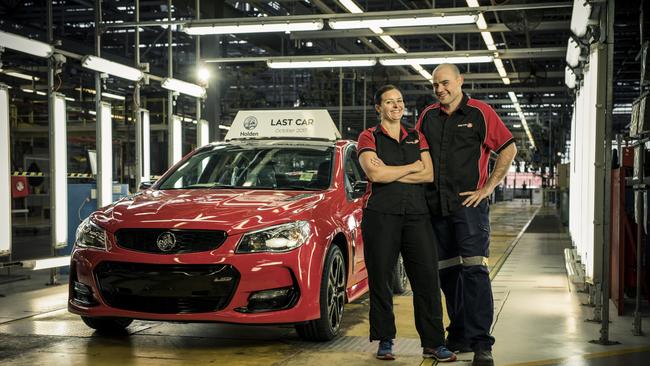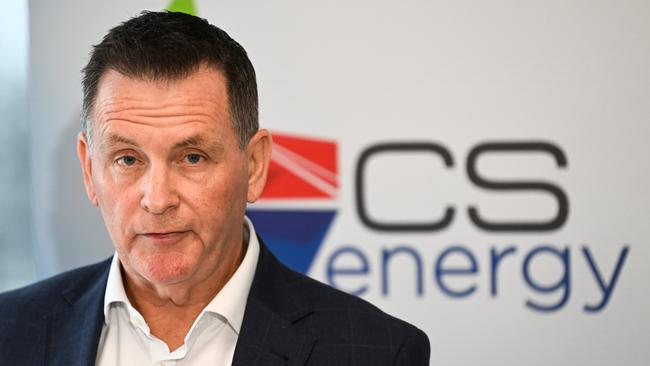Mike O’Connor: Aussie manufacturing a future paid for by taxpayers’ hard-earned cash
The renewable energy industry will become the latest incarnation of the long-gone Holden Commodore as billions in subsidies are dangled before would-be investors, writes Mike O’Connor.
Mike O'Connor
Don't miss out on the headlines from Mike O'Connor. Followed categories will be added to My News.
You have to love the new business plan unveiled by the federal government last week that is so simple that it is truly a wonder that nobody has thought of it before.
Wrapped in a metaphorical Australian flag, Anthony Albanese announced that we would transition into a world energy superpower by making things locally that we presently buy more cheaply from overseas under the banner of the Future Made in Australia Fund.
You’d have to wonder how many working-from-home public servants toiled away in the wee hours to come up with that slogan.
As the Prime Minister explained the local product, solar panels in this case, made by true-blue Aussie toilers and proudly bearing a Made in Australia sticker, might be more expensive than the imported product, but it would be better, causing people to line up to buy it.

It is now seven years since the last Holden Commodore rolled off the production line, signalling the end of the motor vehicle manufacturing industry in Australia.
There were tears aplenty, but the industry had been technically dead for years, kept alive by huge government subsidies and tariffs, good money following bad year after year as the unions made ever-increasing demands to which the car companies acceded as they sucked up the free government money.
Eventually the music stopped with the government in one final gesture of fiscal irresponsibility throwing another billion dollars on top of the billions that had gone before at the Automotive Transformation Scheme.
The renewable energy industry is to become the latest incarnation of the Holden Commodore as billions of dollars in government subsidies are dangled before would-be investors salivating at the thought of the taxpayer-funded battery-powered gravy train that is about to pull into the station.

We already have the $15bn National Reconstruction Fund, which as far as anyone can tell hasn’t reconstructed anything, but hey, it’s a catchy title.
Then there’s the $20bn Rewiring the Nation program, and the $7bn Northern Australia Infrastructure Facility and $4bn Critical Minerals Facility, the last mentioned designed to help incredibly rich mining executives get even richer as witnessed by the $840m package of loans and grants to help a Gina Rinehart-backed company develop a mine in the Northern Territory.
It’s a rosy picture the PM has painted, a future positively aglow with industries beavering away creating renewable, sustainable energy sources, some of them to be realised by technology that does not exist which will propel us towards net zero and make us the superpower envy of the world.
There are, alas, a few cracks in this window to the future.
Making anything – beer, boots, bottles, budgie-smugglers – is expensive in Australia because of the high cost of electricity which will continue to rise due to government policies, high labour and an industrial relations regime dictated to government by the unions that increasingly inhibits productivity gains.

Just how Made in Australia is going to compete with China and other Asian manufacturers, whose governments are busy building new generation high efficiency coal-burning power stations that produce cheap and reliable electricity while we continue to make plans to close ours as authorities warn of the potential for blackouts has not been explained.
It is true you can make any product competitive if you subsidise it heavily enough but government intervention and subsidies have never worked in the past and plastering them with warm, fuzzy slogans like Future Made in Australia will not change this economic reality.
What they do is attract opportunistic entrepreneurs who can smell mug’s money from the far side of the moon and who will line up for a slice of the handouts waving fanciful business cases bursting with emerald-tinged claims of being on the cusp of creating the Next Big Green Thing.

All it will take to materialise the NBGT is a fistful of taxpayer dollars.
While the PM was unveiling his vision splendid, another energy related drama of more immediate concern to Queenslanders was being played out with an attempt by Sev.en, the part-owner of the Callide power station, to find out why it was crippled by a massive explosion three years ago.
The power station is operated by CS Energy which is owned by the state government and which has been busy in court blocking attempts to reveal the findings of an investigation into the explosion.
What, you might well wonder, is the government so keen to keep hidden with an election looming?





